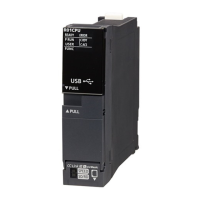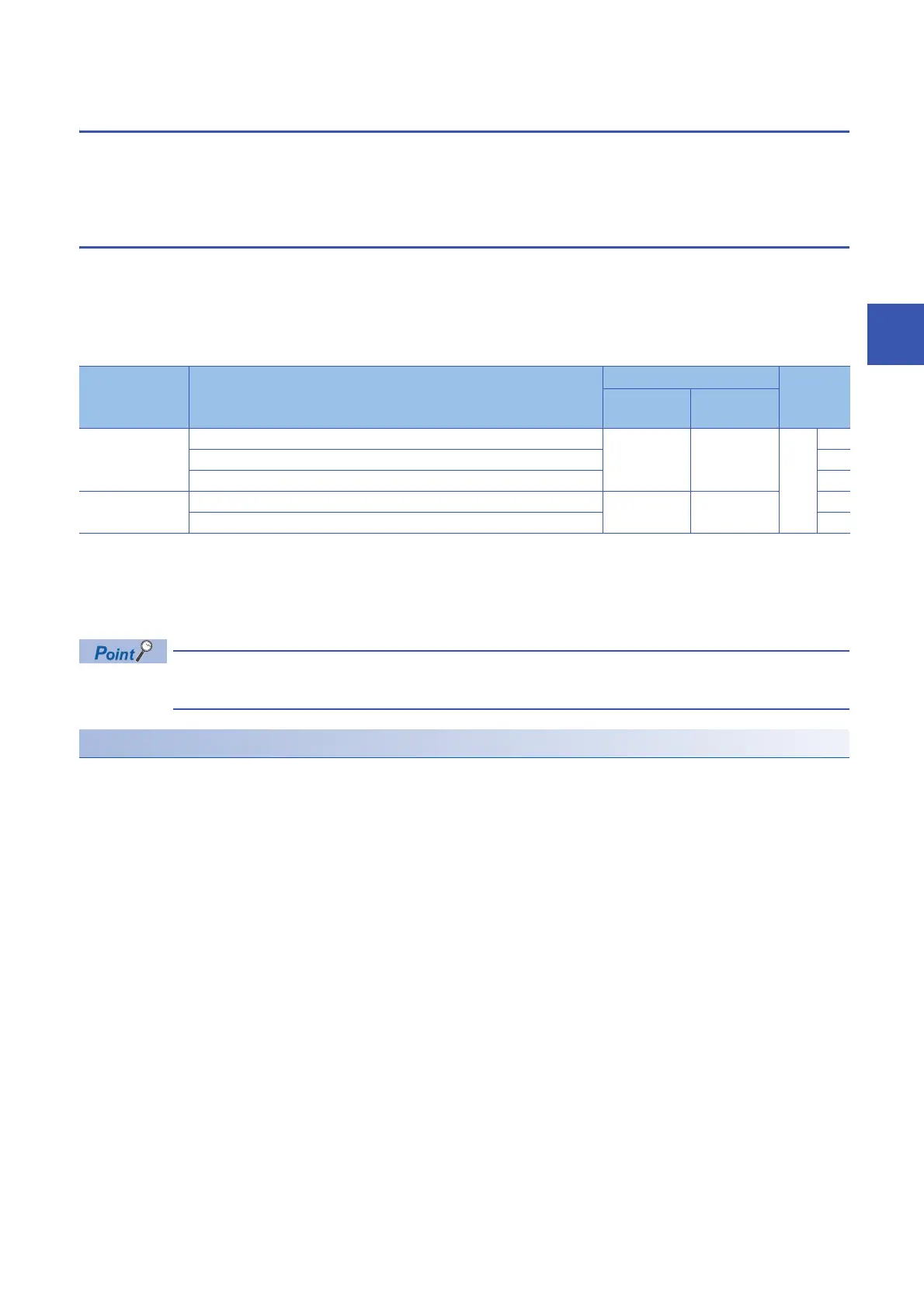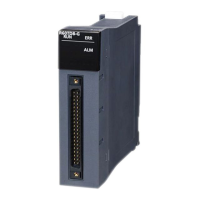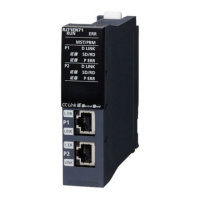28 FUNCTIONS
28.2 System Switching
441
28
28.2 System Switching
This function switches the systems between the control system and the standby system to continue operation of the
redundant system when a failure or an error occurs in the control system. The systems can also be switched manually by a
user for debug or maintenance.
System switching method
The following two methods are available for system switching: system switching (automatically performed by a redundant
system) and manual system switching (performed by a user).
The following table lists the system switching types, causes, execution availability by operation mode, and priority of when
multiple causes are simultaneously generated.
: Operation possible, : Operation not possible
• When multiple system switching causes are simultaneously generated, the systems are switched according to the cause
with higher priority. The switching cause determined according to the priority is stored in the event history and SD1643
(System switching cause).
• The manual system switching is requested for the control system CPU module.
The systems are not switched even when the CPU module is set to the STOP state. They are switched when
any of the above switching causes is generated.
Automatic system switching
A redundant system judges whether system switching is required or not in backup mode, and automatically switches the
systems between the control system and the standby system as required.
System
switching type
System switching cause Operation mode Priority
Backup
mode
Separate
mode
Automatic system
switching
Power-off, reset, hardware failure of the CPU module High
Low
1
Stop error of the CPU module 2
System switching request from a network module 3
Manual system
switching
System switching request by the SP.CONTSW instruction 4
System switching request from the engineering tool 5

